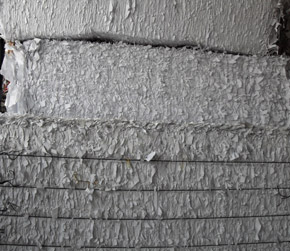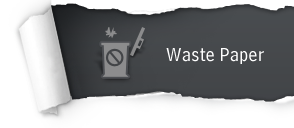Recyclable grades of paper are traded under several names depending on the composition, the make of the paper, the source of the paper and the percentage of out throws. However the most general categories of waste paper are:

Brown Grades
These waste paper/paper boards are used primarily in the process of board making or Kraft making. Common examples are old corrugated cartons (OCC) and other corrugated derivatives, board and board derivatives, Kraft and Kraft derivatives. These materials are usually obtained from supermarkets, retail chains, grocery stores etc. Pre -consumer material is obtained in the form of cuttings and waste from corrugating plants.



Mechanical Grades
Used primarily in the process of newsprint/ publication paper production, these short fiber grades can be either post or pre-consumer. The common grades are old over issued newspapers, old magazines, pamphlets; old/over issued telephone directories etc. Common collection points are households, office buildings and printing presses.



White Grades
The white/chemical grades span a range of post and pre consumer grades. Post consumer collections occur in office buildings (white/sorted office paper, white ledger paper etc) and households (notebooks and envelopes) while pre consumer material is usually collected at printing presses (publication blanks, coated book stock, envelopes etc.) and paper mills (white shavings).



Mixed Paper Grades
Mixed paper is a large quantity, lower priced grade which, as the nam e suggests, consists of a mixture of various papers not limited by type or fiber content. Grades and prices vary according to the collection area, fiber quality and ease of pulping (amount of outthrows and prohibitives etc.)



Other Specialty Grades
Apart from the main categories, there are several small and low quantity grades which are used in the production of specialty or regular paper. Paper plates, bleached and/ or poly-coated Kraft, carton scrap, computer printouts, tabulating cards and plastic window envelopes are examples of this category.













